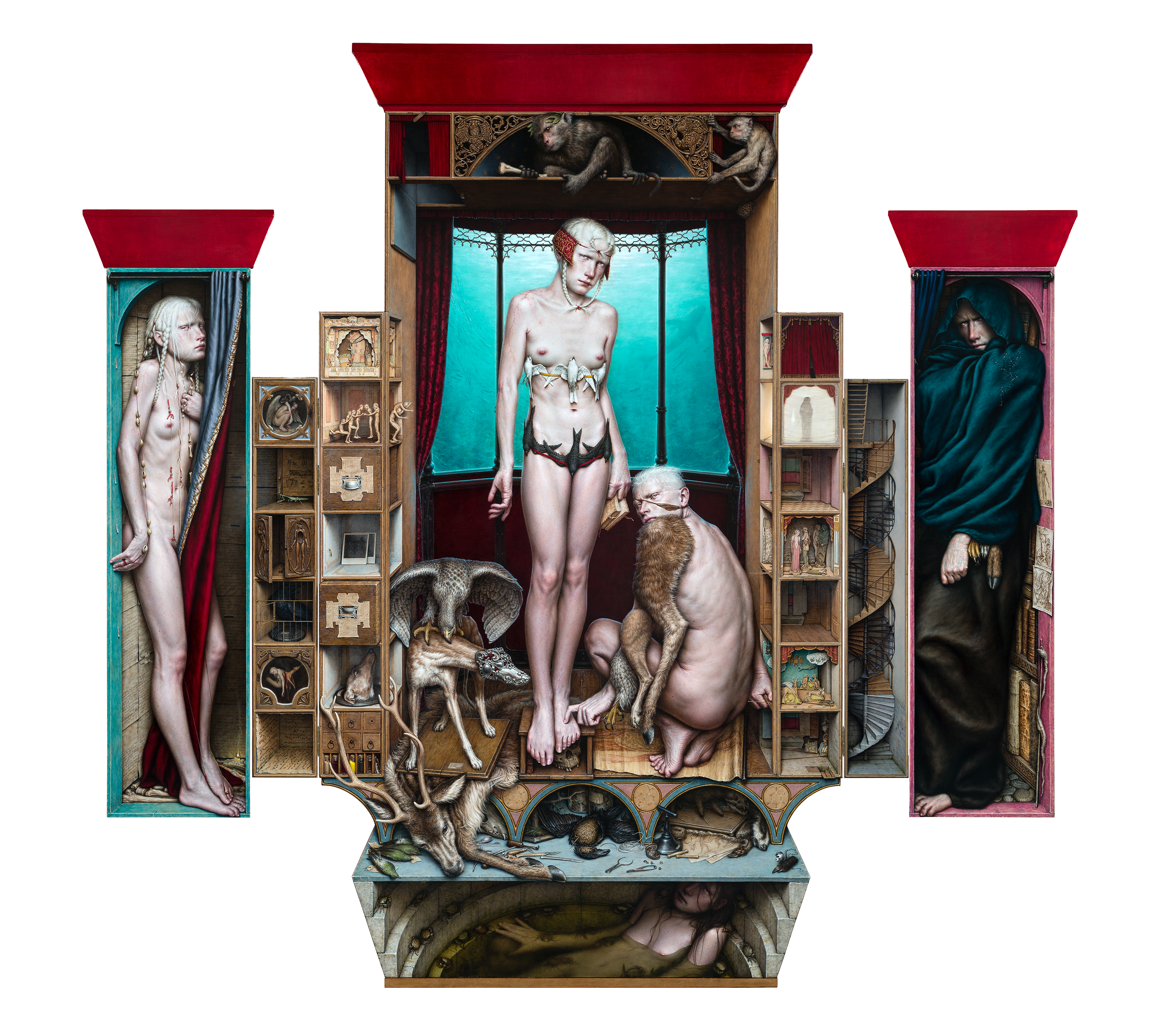
A Crown Jewel of Art Collecting:
Liber Fulguralis by Dino Valls
Indulge in the awe-inspiring elegance of the IBEX creation by the renowned artist, Dino Valls. Liber Fulguralis is a breathtaking five-piece masterpiece that goes beyond the limits of imagination. With each brushstroke, Valls weaves captivating interwoven narratives, stretching across time and space, inviting you into a thought-provoking dialogue.
Panel I | Hygieia
This female figure on the left is the Greek mythological goddess of health, Hygieia.
Read MorePanel III | Nemesis & Hubris
The center image is the double personification of Nemesis and Hubris.
read morePanel IV | The Helicoidal Stairs
‘The Triple Itinerary on the Helicoidal Stairs’ describes a journey of self-discovery and personal growth represented by a Promethean character
read more
Previous slide
Next slide

Play Video
An Intimate Portrait of Artistic Legendary:
Dino Valls
Dino Valls was born in Saragossa, Spain, in the year 1959. Sixteen years later, Valls taught himself to paint in oils, building on his childhood love of drawing. In 1982, Valls earned his degree in medicine and surgery and then focused solely on his painting career.